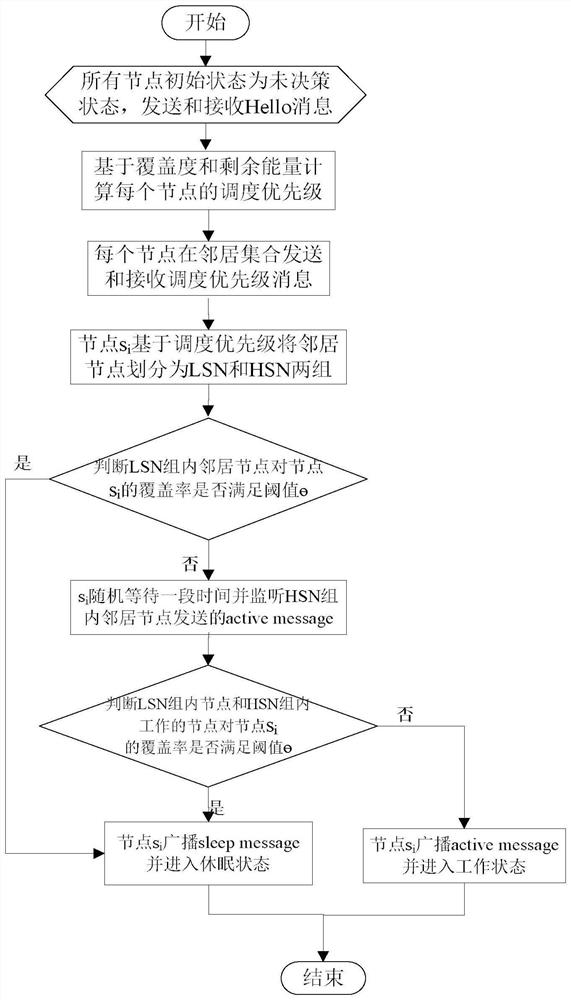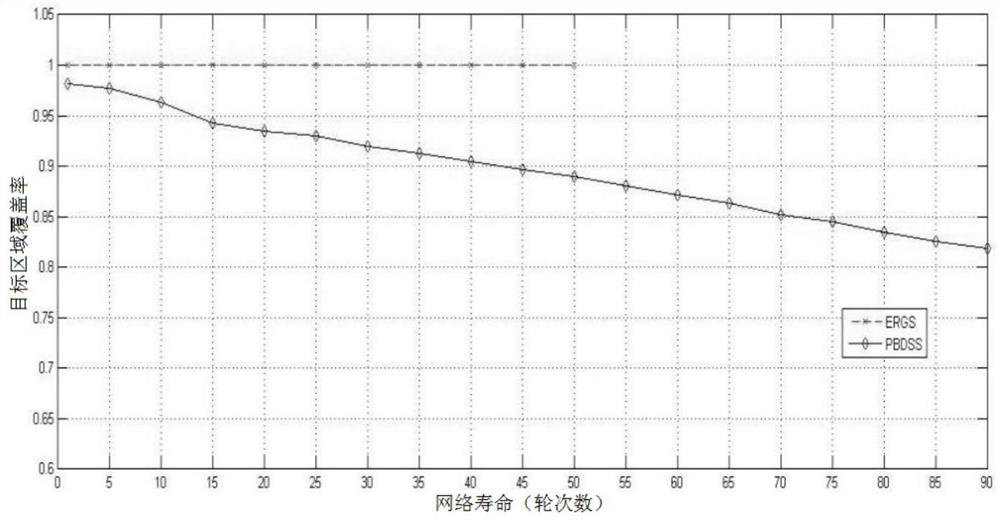Node sleep scheduling method and system comprehensively considering network coverage and energy efficiency
A technology with network coverage and comprehensive consideration, applied in network planning, network traffic/resource management, and energy reduction, etc., it can solve the problems of unbalanced node energy use, excessive redundant data, and unreasonable network topology. The effect of solving boundary effects, reducing energy overhead, and improving energy efficiency
- Summary
- Abstract
- Description
- Claims
- Application Information
AI Technical Summary
Problems solved by technology
Method used
Image
Examples
Embodiment Construction
[0038] Below in conjunction with specific embodiments, the present invention will be further illustrated, and it should be understood that these embodiments are only used to illustrate the present invention and not to limit the scope of the present invention. The modifications all fall within the scope defined by the appended claims of this application.
[0039] 1. Network model
[0040] The priority-based node sleep scheduling method is a distributed scheduling mechanism, which is mainly aimed at the wireless sensor network application scenario used for target area monitoring. The specific network model is as follows: figure 1 As shown, it is assumed that the target monitoring area of WSN is set as a two-dimensional rectangular area, and the sensing nodes are randomly distributed in the target area. (base station). All sensor nodes deployed initially can completely cover the target area, and it is assumed that all sensor nodes are homogeneous, that is, have the same initi...
PUM
 Login to View More
Login to View More Abstract
Description
Claims
Application Information
 Login to View More
Login to View More - R&D
- Intellectual Property
- Life Sciences
- Materials
- Tech Scout
- Unparalleled Data Quality
- Higher Quality Content
- 60% Fewer Hallucinations
Browse by: Latest US Patents, China's latest patents, Technical Efficacy Thesaurus, Application Domain, Technology Topic, Popular Technical Reports.
© 2025 PatSnap. All rights reserved.Legal|Privacy policy|Modern Slavery Act Transparency Statement|Sitemap|About US| Contact US: help@patsnap.com



